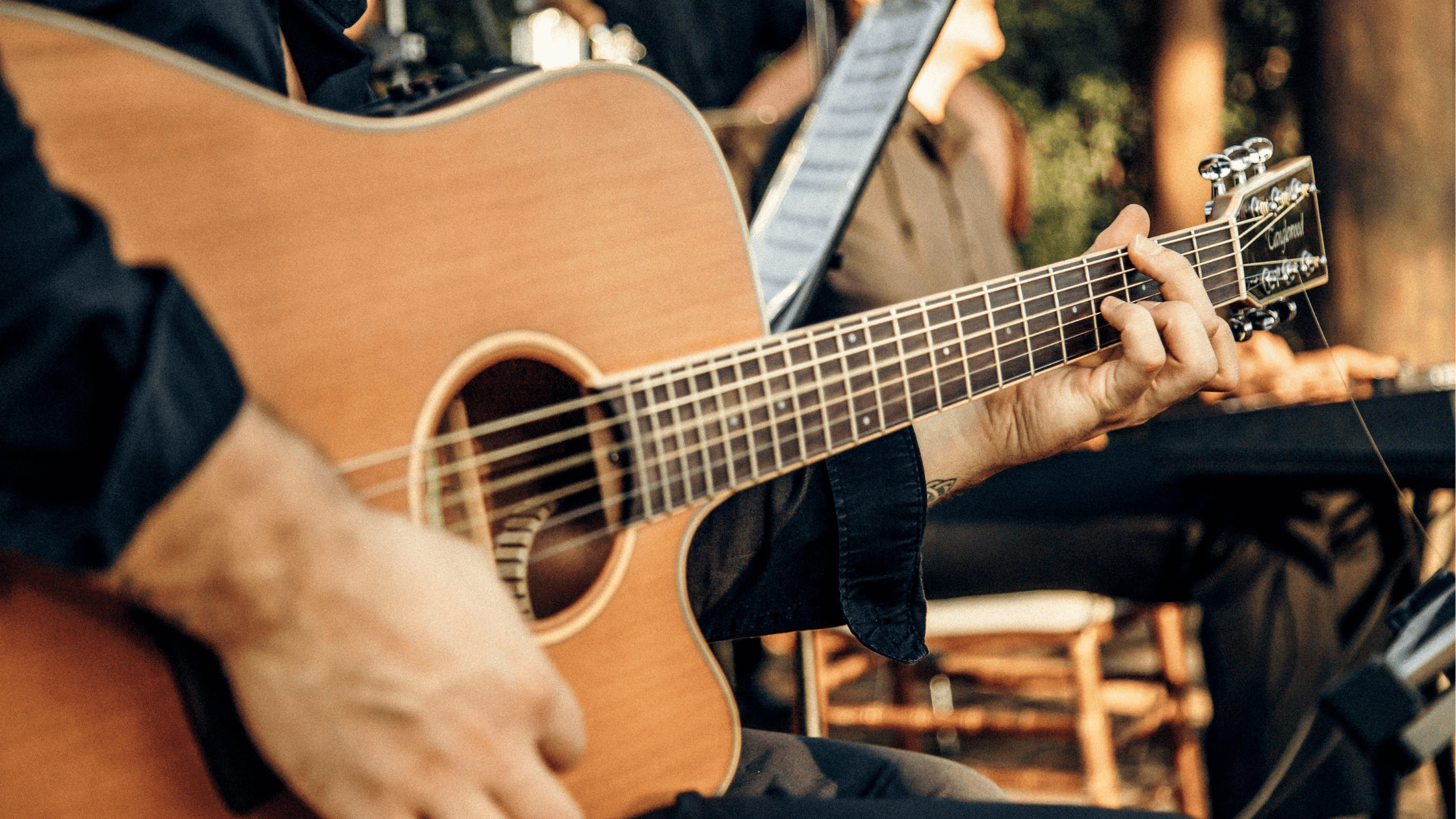Beginner’s Guide to Open Mic Nights: Embracing the Stage and the Crowd
Open mic nights offer a unique platform for both performers and audiences to engage in a shared experience of live entertainment.
If you’re new to open mic nights, they are events where anyone can sign up to perform in front of an audience. They are often held at local venues like coffee shops, bars, or community centers.
They’re a fantastic way to spend an evening, whether you’re looking to showcase your talents or just kick back and enjoy a variety of performances.
As a spectator, you’ll get to witness a diverse range of talent, and as a performer, you’ll have the opportunity to take the stage and share your art.

If you’re considering stepping into the world of open mic nights, it’s essential to understand what to expect and how to prepare.
For performers, preparation goes beyond selecting your piece; it involves understanding the proper etiquette, knowing what gear to bring, and honing your skills for a compelling performance.
For spectators, open mic nights can be a way to support local talent, discover new artists, and enjoy an evening of entertainment.
In either role, open mic nights are about community and celebrating creative expression in an inclusive environment.
Key Takeaways
- Open mic nights provide a platform for performers and a diverse range of live entertainment for spectators.
- Performers should be well-prepared and familiar with the etiquette and the gear required for their performance.
- Open mic nights are a communal space that celebrates creative expression in a welcoming atmosphere.
Discovering Open Mic Nights

Open Mic Nights offer a unique experience whether you’re watching others perform or taking the stage yourself. They are a platform for live performance where you can engage with diverse artistic expressions.
Check out openmikes.org to find the closest open mics available in your area…
Understanding Open Mic
At an open mic, you’re in a place where anyone can showcase their talent. This could include singing, playing an instrument, telling jokes, or reciting poetry.
It essentially provides a microphone and stage for community members to share their art with an audience.
It’s important to remember a few key things:
- Arrive early: To secure a spot or good seat, as these events can fill up quickly.
- Be prepared: Whether you are spectating or performing, know what the evening entails.
- It’s common courtesy to stay for the whole event to support fellow artists.
- Respect the rules: Each open mic might have its own set of rules, such as time limits for each act, so it’s crucial to adhere to them.
For a smooth open mic experience, being aware of the venue’s system, like if a PA system and microphone are provided, will help you plan what else you might need to bring for your performance.
Types of Open Mic Nights
Open mic nights can vary greatly in their focus and atmosphere. Here are a few common types you might encounter:
- Music Open Mic: Usually centers on musical performances, where you can bring your instrument and play a set.
- Comedy Open Mic: A great spot for budding comedians to test out new material in front of a live audience.
- Poetry and Spoken Word: These nights are perfect for poets and storytellers to share their work.
Some venues might provide certain equipment or instruments, but it’s wise to check the event’s details in advance.
Whether your interest lies in music, comedy, or poetry, open mic nights can be a rewarding way to spend an evening.
Preparation for Performers
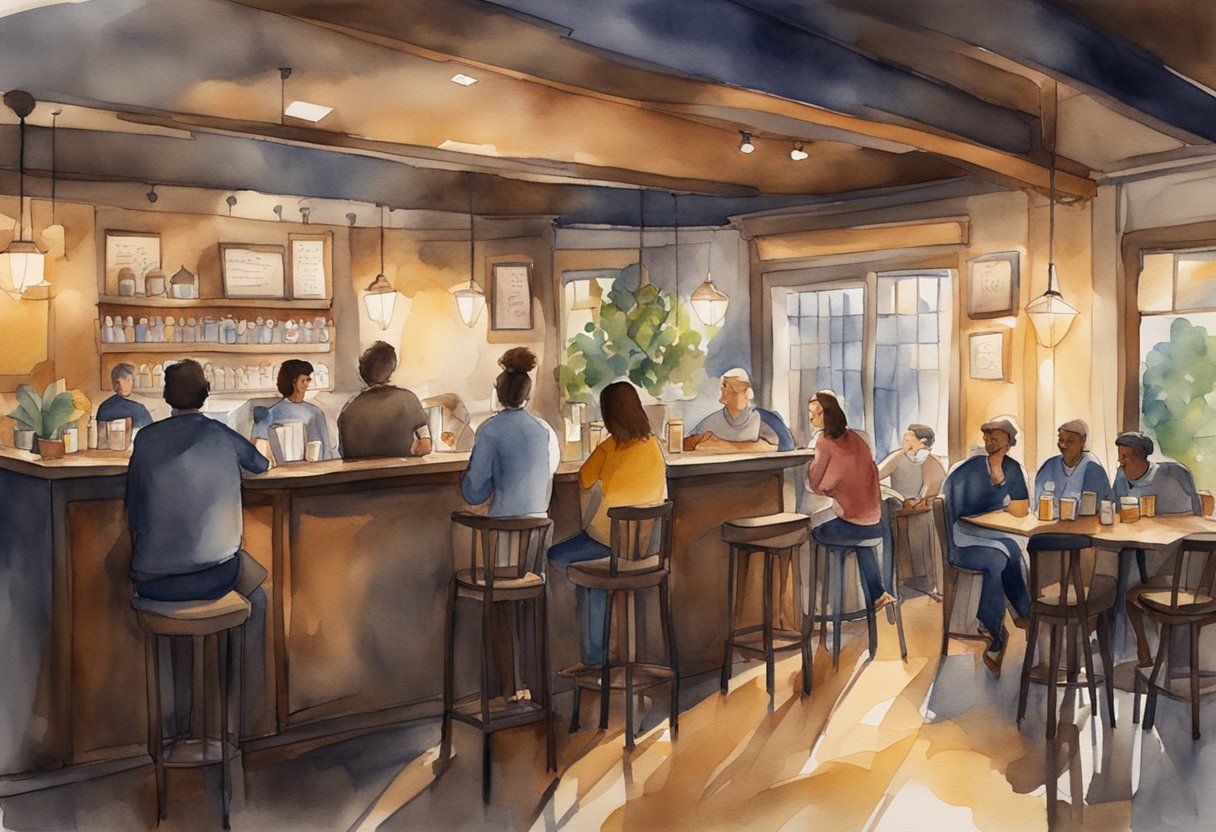
Successful performances at open mic nights depend on careful selection of material, solid rehearsal strategies, and knowing what essentials to bring along.
Make sure you focus on these areas to set the stage for a great show.
Selecting Your Material
When choosing what to perform, consider your strengths and what the audience might enjoy.
Keep your setlist varied with different tempos and moods to maintain interest.
If you’re a musician, a mix of songs that showcase your skills on the guitar, keyboard, or banjo would be ideal.
Typically, you’ll have around 10-15 minutes, so plan for 2-3 songs or pieces.
- Original works: If you write your own music or poetry, an open mic is a perfect place to share it.
- Covers: Choose covers that you connect with; songs that feel natural for you to perform.
- Crowd Pleasers: Popular or upbeat tunes could win the crowd if you’re unsure.
Rehearsal Strategies
Rehearsal is where you get comfortable with your material and work out any kinks.
Aim to practice in an environment similar to the performance space.
Use a microphone and amp to get used to the acoustics and timing of live playing.
- Repetition: Practice each piece until you can perform it confidently without hesitation.
- Record Yourself: Listening to recordings can highlight areas for improvement.
- Mock Performance: Perform in front of friends or family for feedback.
What to Bring
On the night, make sure you have all the necessary gear.
Most venues provide a PA system and microphone, but you should bring any personal instruments and accessories. Here’s a quick checklist:
- Instruments: Your guitar, keyboard, or other instruments.
- Extra Strings/Picks: Especially if you’re playing stringed instruments.
- Backup Materials: Have extra copies of lyrics or chords, just in case.
Gear and Equipment
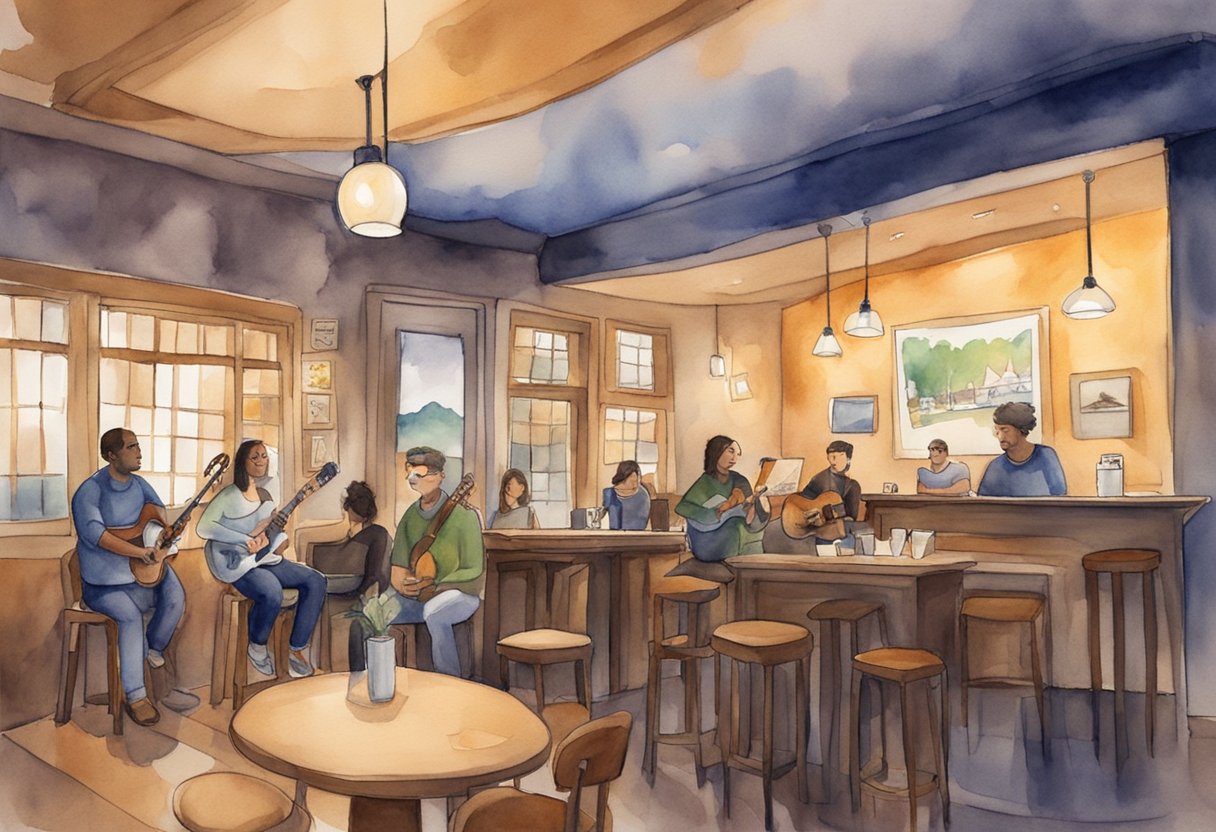
To perform at an open mic, you’ll need the right gear and equipment.
Selecting instruments that suit your style and using the correct microphones can enhance your performance.
Choosing the Right Instruments
When you’re preparing for an open mic, your choice of instrument is crucial.
If you’re playing guitar, consider the venue’s acoustics.
Acoustic guitars are ideal for small, intimate spaces, while electric guitars may suit louder venues.
If you play the keyboard, ensure it’s a model that can easily connect to the venue’s sound system.
For those interested in folk music, bringing a banjo could add a unique sound to the mix.
- Acoustic Guitar: Versatile for various genres; no need for amplification in small rooms.
- Electric Guitar: Requires an amp; offers effects for different sounds.
- Keyboard: Should have output options for PA systems; check volume levels.
- Banjo: Offers a distinct twangy tone; check for microphone compatibility.
Understanding Microphones
Your choice of microphone can impact your sound quality.
For most instruments, dynamic microphones are sturdy and reliable. They are well-suited for live performances and are less sensitive to sound pressure, making them good for loud environments.
If you’re singing or speaking, a microphone that clearly captures the nuances of your voice without picking up too much background noise is essential.
Types of Microphones:
- Dynamic Microphones: Great for instruments and loud vocals.
- Condenser Microphones: Capture more detail; ideal for quiet instruments or nuanced vocals.
Amplification and Sound Check
Amplification is key in making sure your performance is heard.
If you’re using an acoustic instrument, you may need a pickup or microphone to project your sound.
For electric instruments and keyboards, ensure you have the necessary cables and amps.
Sound Check Steps:
- Test your instrument’s levels and adjust them as needed.
- Check the balance between your vocals and instruments.
- Make any last-minute changes to your setup for the best sound.
Rules and Etiquette
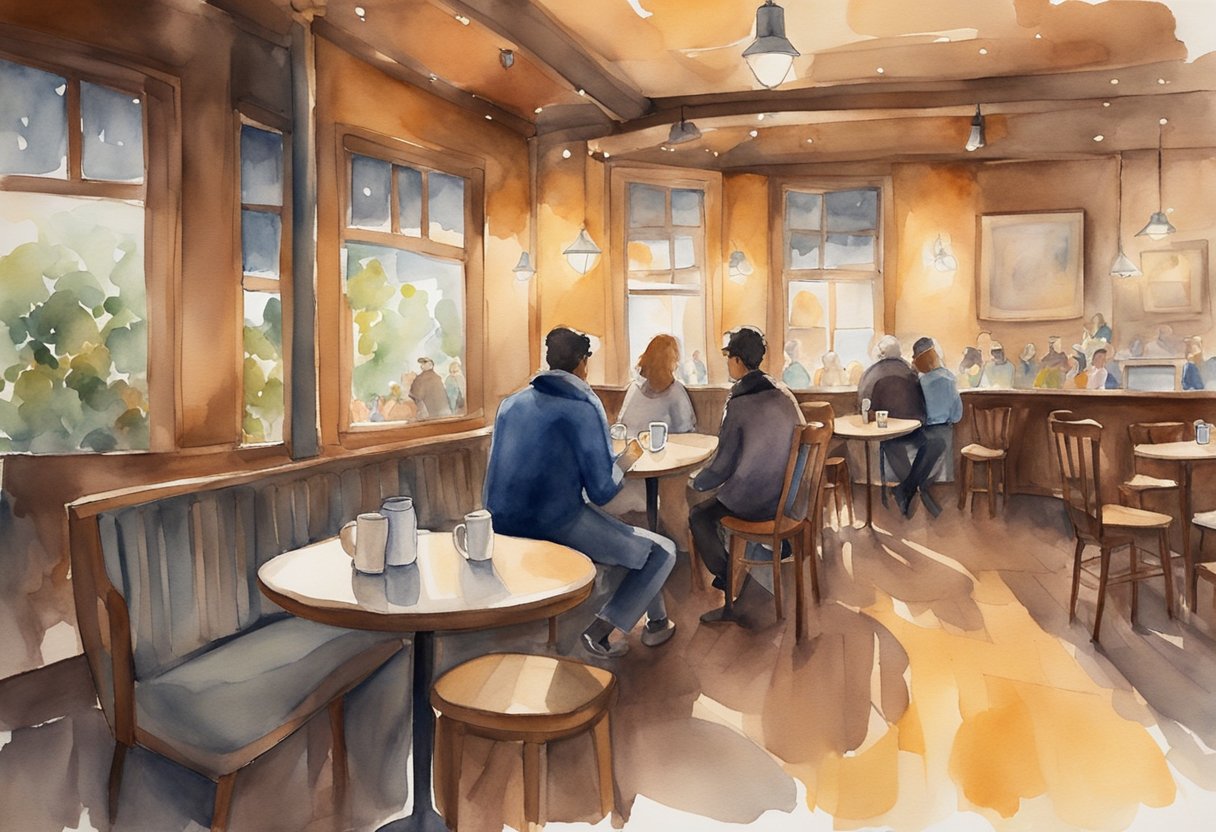
To thrive at open mic nights, it’s important to understand the established protocols and show respect to performers and attendees alike.
Your awareness of these nuances ensures a rewarding experience for everyone involved.
Open Mic Protocols
Before diving into the world of open mics, know that timing is crucial.
Each performer is typically allocated a set amount of time on stage.
It’s your responsibility to be aware of your time slot and to not exceed it. Overstaying your welcome can throw off the schedule and limit the opportunities for others.
- Sign-Up: It’s common for open mics to have a sign-up sheet. Arrive early and make sure your name is on that list.
- Some open mics span a certain timeframe, allowing only a set number of acts in the show.
- Equipment Care: Handle all equipment, including mics and stands, with care.
- Adjust the mic stand by loosening it first, then tightening it after making your adjustments.
- This helps to maintain the equipment for future use and shows respect for the venue’s property.
Respect and Audience Engagement
Your behavior, as an audience member or fellow performer, impacts the experience.
Showing respect doesn’t just mean clapping after each performance; it extends to your overall conduct throughout the event.
- Feedback: Constructive feedback is welcome, but it’s best given after the performance and in a supportive manner.
- During performances, do your best to remain attentive and keep conversations at a low volume, especially during quieter songs.
- Volume Control: Even when you’re not on stage, your actions contribute to the environment.
- Don’t talk loudly over a performance, and be mindful of the performers and other audience members who are there to listen.
Improving Performance Skills
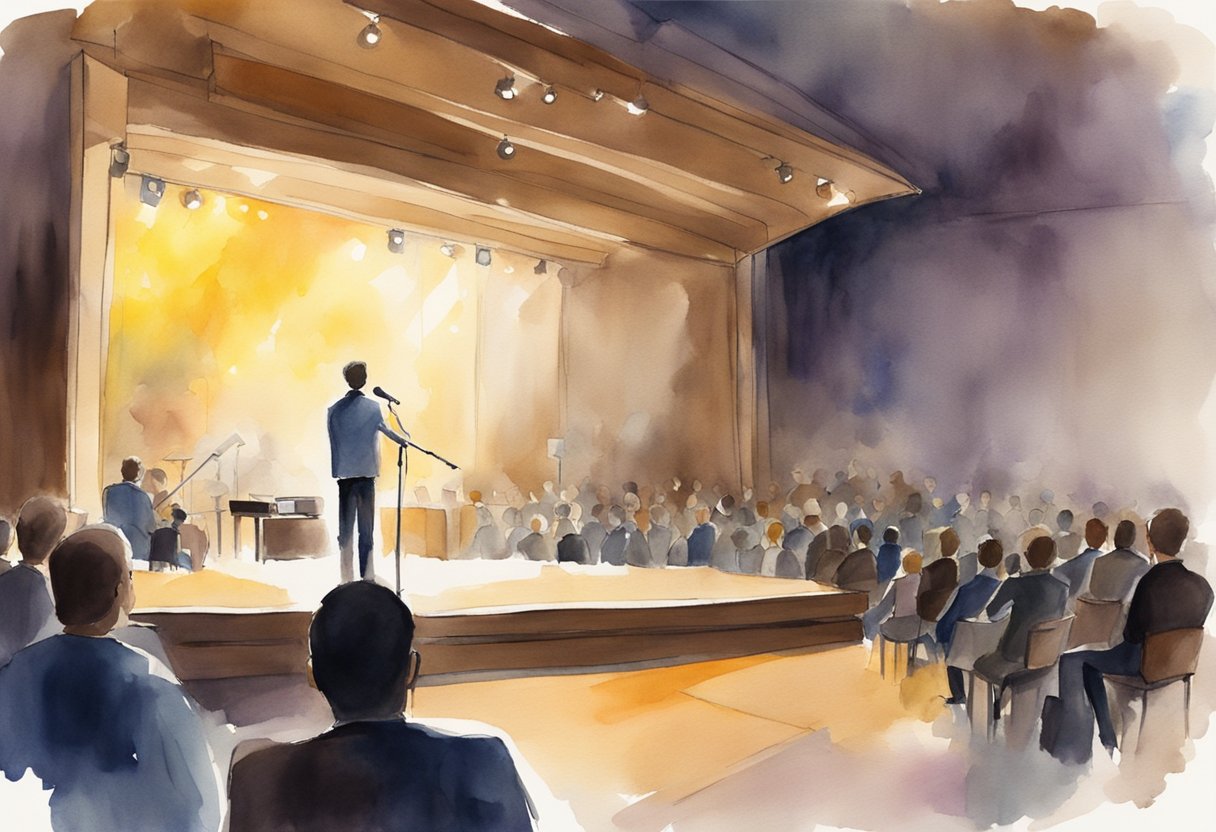
To excel in live performances, focusing on stage presence, managing stage fright, and engaging with the audience is crucial. These elements can dramatically enhance your time on stage.
Stage Presence
Your stage presence is the energy and persona you project when performing. Here are a few performance tips to improve it:
- Practice Movement: Move around the stage to connect with the entire audience. Use gestures to emphasize parts of your songs.
- Eye Contact: Connect with audience members by looking them in the eyes. It makes your performance feel more personal and engaging.
- Facial Expressions: Show emotion through your face. Your expressions should match the tone of the song you’re singing on stage.
Dealing With Stage Fright
Stage fright is common, but it can be managed with these strategies:
- Breathing Exercises: Deep, steady breathing calms nerves. Practice breath control not just for singing, but also for relaxation.
- Visualization: Picture a successful performance before stepping on stage. Imagine the audience enjoying your music.
- Preparation: Build your confidence by knowing your material inside out. The more prepared you are, the less anxious you’ll feel.
Interactive Performing
Engaging with your audience makes for memorable live performing. Here’s how you can be more interactive:
- Audience Participation: Encourage the audience to clap, sing along, or respond to your cues.
- Storytelling: Share stories related to your songs. This can create a connection and make your set more interesting.
- Ask Questions: Pose questions to the audience to create a dialogue. This can make your performance more dynamic and inclusive.
After Your Performance
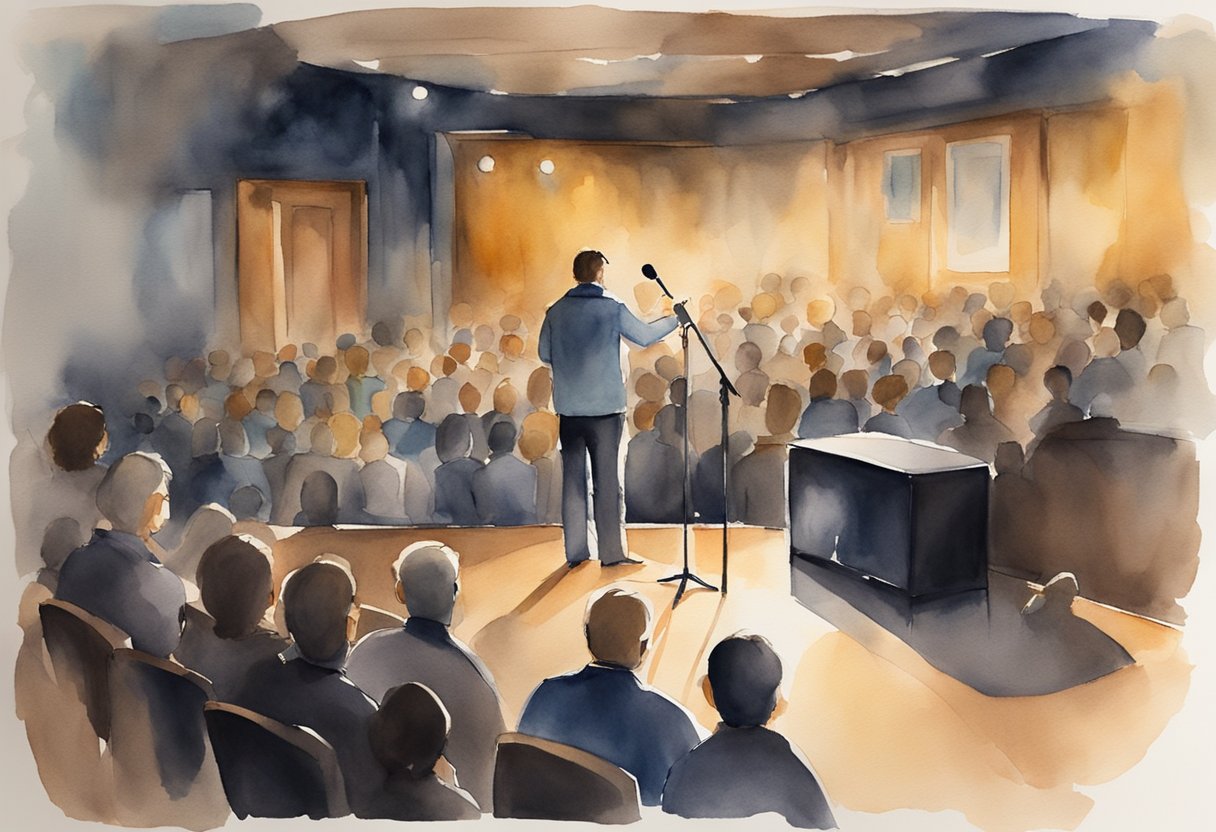
Once you’ve stepped off the stage, it’s time to engage with the audience and fellow musicians. These interactions are valuable for personal growth and expanding your circle in the music community.
Receiving and Giving Feedback
After you perform, be open to receiving feedback. Listening to what others say about your performance is crucial for your improvement. Friends, audience members, and other performers can offer insights into what you did well and what could be enhanced. Here’s how to handle feedback:
- Stay Gracious: Always thank individuals for their input, even if it’s critical.
- Ask Questions: If someone gives you vague feedback like “that was good,” encourage them to elaborate by asking which part they enjoyed most.
- Take Notes: If possible, jot down the comments or use your phone to keep a record.
- Share Your Experience on Social Media: Post-performance is a great time to update your social media. Share your thoughts, photos, or clips from your performance and ask your followers for their feedback as well.
In the same way you receive feedback, offer your thoughts to others. Remember to be constructive, specific, and kind when you’re giving feedback. It’s not just about what you say, but how you say it that can help foster a supportive environment.
Networking with Fellow Artists
The time after your performance is also perfect for networking. You can make connections that might lead to future opportunities, collaborations, or simply form friendships based on mutual interests. Here are some networking tips:
- Introduce Yourself: Don’t be shy to approach other performers and audience members.
- Exchange Details: Exchange social media handles or business cards to stay in touch.
- Offer Support: Show your interest by talking about their performance, offering help, or suggesting future joint performances or practices.
- Attend Regularly: The more frequently you attend open mic nights, the more recognizable and approachable you will become to others.
For the Spectators
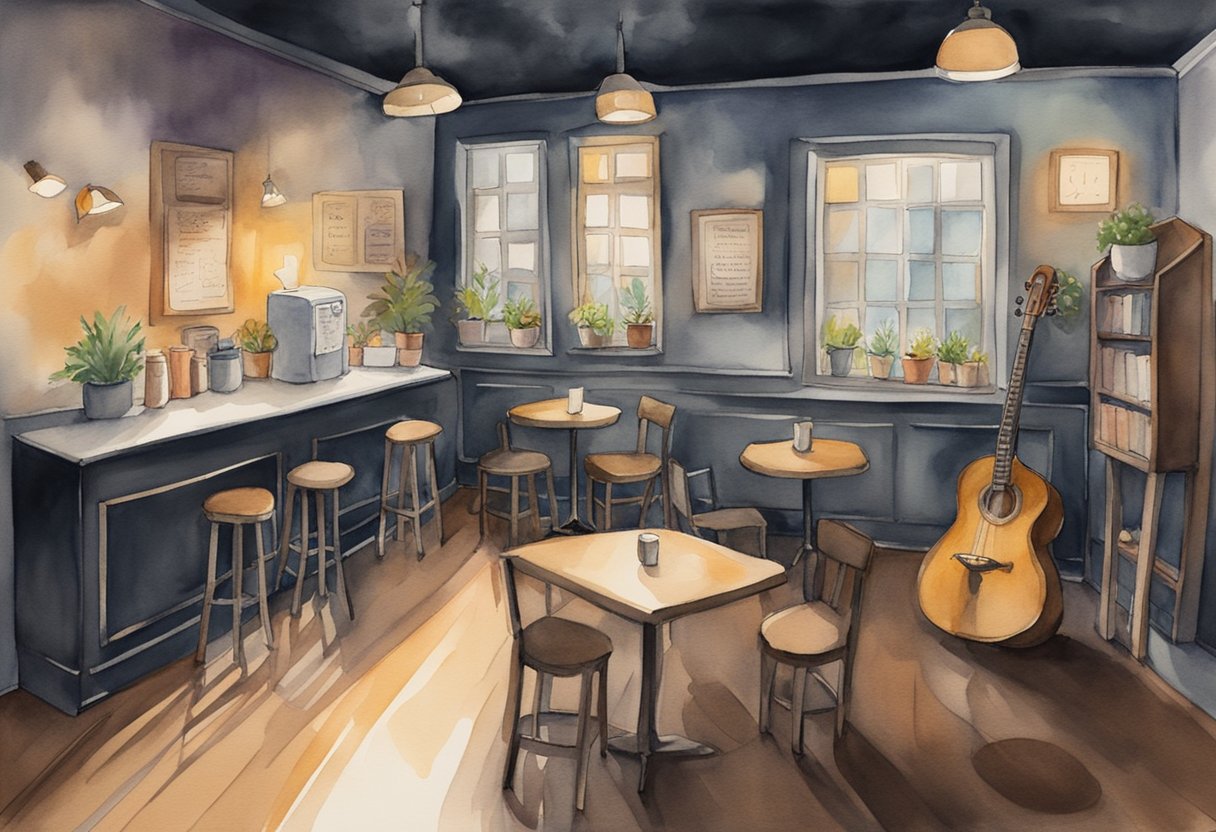
Attending open mic nights can be a delightful experience. Make informed choices about which events to attend and learn the best ways to support the performers.
Choosing Events to Attend
When you’re looking to enjoy live performances as a hobby, the type of open mic night matters. Research local venues hosting open mic events to ensure they align with your interests, whether that’s music, poetry, or comedy. Here are steps to choose the best events:
- Check Schedules: Many venues have regular open mic nights. Find one that fits your schedule.
- Consider the Genre: Some events might be genre-specific. Pick one that caters to your taste.
- Venue Vibe: Look for venues known for a good atmosphere conducive to the kind of experience you want.
- Read Reviews: See what previous attendees had to say about the event to gauge its quality and suitability for you.
Supporting Performers
Showing support to performers is a key aspect of the open mic experience. Here’s how you can truly be part of the event:
- Applause: Always clap after a performance, regardless of your personal taste.
- Attentiveness: Give your full attention to the person on stage. It’s both respectful and encouraging.
- Engage: If appropriate, interact with the performers after the show. Compliments can go a long way.
- Patronage: Buy merchandise if available, or at least engage with the performers on social media.
- Promotion: Share your experience on social media to promote the artists and the venue hosting the open mic night.
Using Social Media
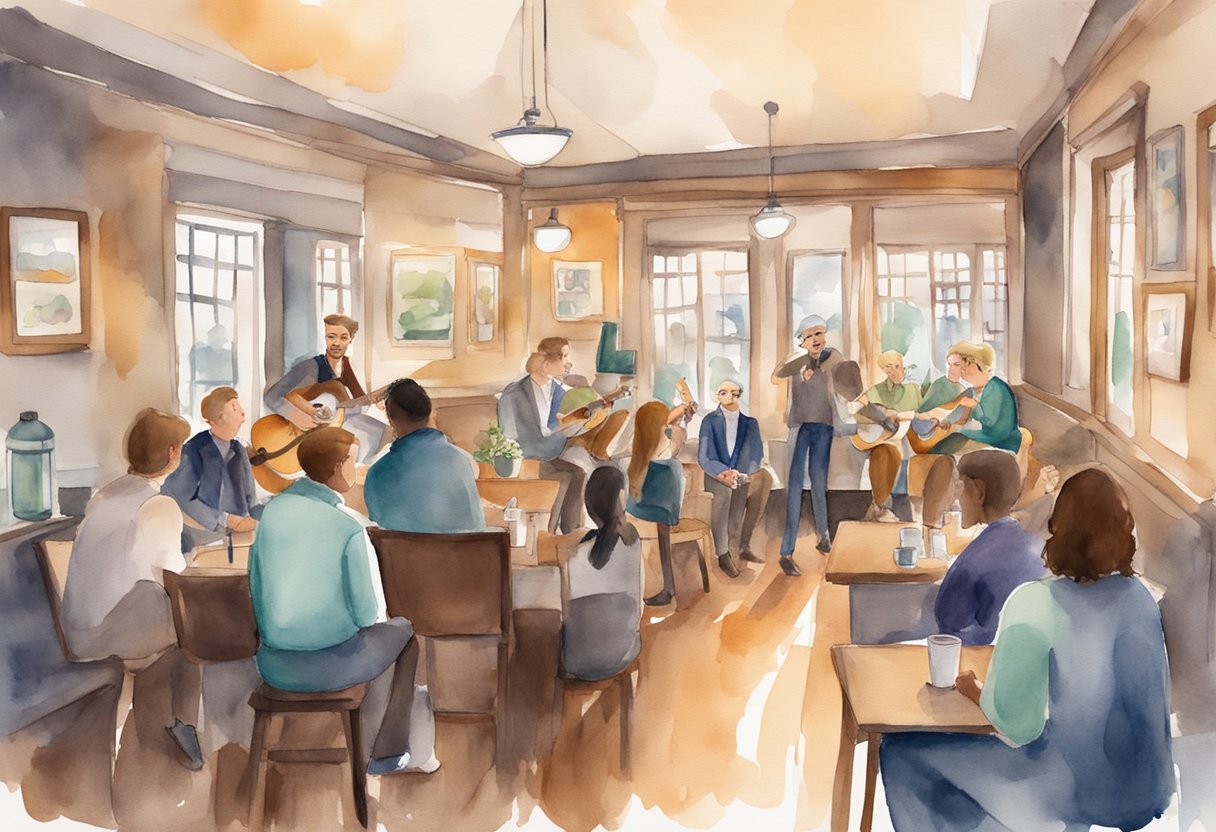
Social media platforms offer you dynamic ways to document and share your open mic experiences, as well as to build connections within the artistic community.
Sharing Your Experience
Post photos, videos, and updates from your night out or your own performance on platforms like Instagram and Facebook. Create short, engaging captions and use relevant hashtags like #OpenMicNight or #LiveMusic to extend your reach. Tagging the venue or event can gain you more visibility and possibly even a share from their page. Platforms such as Snapchat or Instagram Stories are great for real-time updates during the event.
- Post Tips:
- What to Share: Performance clips, crowd reactions, backstage moments
- Hashtags: #OpenMic, #SingerSongwriter, #StandUpComedy
- Tagging: @[VenueName], @[EventOrganizer], other performers
Remember to respect the privacy and wishes of others. Always ask for consent before posting images or videos of the performers and audience members.
Connecting With the Community
Use social media not just for broadcasting your experiences, but also to engage with others. You can find groups and pages on platforms like Facebook, or follow accounts dedicated to open mic nights on Twitter. Comment on posts, share your thoughts or ask for feedback on your performance. Joining online forums and discussions can help to:
- Find new venues to visit or perform at
- Learn from the experiences and tips of others
- Network with fellow performers and enthusiasts
- Stay informed about upcoming open mic events
By actively participating in online communities, you can also discover collaboration opportunities and gain valuable insights into improving your craft.
Continuing Your Open Mic Journey

After you’ve dipped your toes in the world of open mic, it’s time to think about how to enhance your skills and enjoy this hobby more fully. Whether you aim to become a better performer or simply appreciate the art, setting clear objectives and seeking new avenues for inspiration are key to your progress.
Setting Goals
Start by setting achievable goals for your open mic adventures. Whether it’s to perform at a certain number of events each month or to master a new piece to present, having clear targets will guide your efforts. Outline your objectives with these points in mind:
- Short-Term Goals: Identify what you want to accomplish in the next event, like trying out a new song or poem.
- Long-Term Goals: Think bigger – perhaps getting a feature spot or becoming a regular at your favorite venue.
Adhere to a step-by-step approach to make these goals a reality:
- Determine what success looks like for you—be specific.
- Break down your goals into smaller, manageable tasks.
- Record your performances to track your progress and areas for improvement.
Finding Inspiration for Growth
Continuous improvement in your open mic hobby comes from a mix of personal reflection and external inspiration. To evolve as an artist:
- Listen to a variety of performers at different open mic nights to gain performance tips and styles.
- Seek feedback from peers and use it to refine your approach.
- Explore other art forms such as writing, painting, or dancing to spark creative growth.
Remember, every performance is an opportunity to learn something new and put that knowledge into practice at your next open mic night. Stay curious and open to change, and watch how your hobby flourishes.
Creating Your Own Open Mic Night

If you’re passionate about music, comedy, or poetry, an open mic night can be a perfect way to bring your community together and showcase local talent. Your planning skills and creativity will shine as you organize the event and spread the word.
Planning and Organization
Begin by securing a venue that is accessible and comfortable for both performers and spectators. This could be a local cafe, bar, or community hall.
Ensure the space has the necessary audio equipment such as microphones, speakers, and amplifiers.
Choose a date and time that won’t clash with other local events to maximize attendance.
Next, create a schedule that allows for an array of performances, giving each participant a set time to perform.
Having a sign-up sheet available beforehand on social media or at the venue helps manage the lineup efficiently.
Remember to offer a variety of food and drink options, as suggested by Little Corner of A Music Lover, to keep your audience satisfied.
Organize a small team to help with various tasks, like sound management and attendee check-in.
Make sure the rules are clear to all participants to maintain a fun and respectful atmosphere.
For performers new to the scene, provide a warm, supportive environment that encourages their talents.
Promotion and Managing the Event
The success of your open mic night largely depends on effective promotion.
Use social media to create event pages and shareable posts to spread the word.
Consider reaching out to local influencers or community groups who might be interested.
Traditional methods like flyers and local radio announcements can also capture a wider audience.
As the event approaches, confirm details with performers and stay connected with them.
On the night of the event, manage the schedule to ensure everyone gets their chance to shine and that the night runs smoothly.
Interact with the audience and make them feel welcome; their experience will influence their decision to return for future events.
Engage with the attendees through social media by encouraging them to tag your open mic on platforms like Instagram or Twitter, as this fosters an online community and builds anticipation for the next event.
After the event, thank your performers and audience online and start gathering feedback.
Your openness to suggestions will help continually improve the experience for everyone involved.
Benefits of Open Mic Nights

Open mic nights offer you various advantages both as a spectator and as a performer.
When you attend an open mic, you immerse yourself in a creative community which can be a powerful experience.
You’re exposed to a wide array of artistic expression, providing you with rich cultural experiences and the chance to discover new and diverse talents.
As a performer, the stage at an open mic night enables you to practice your craft in a live setting, which is crucial for your growth as an artist.
It’s a space for you to test new material and get immediate feedback from an audience. This kind of environment fosters learning and improvement.
Networking opportunities are also abundant. You meet fellow artists and potential collaborators, which can lead to new projects and opportunities.
For you as a hobbyist, it’s also a way to unwind and enjoy yourself, as these nights are designed for entertainment.
Lastly, they can be good for your wellbeing. Performing can boost your confidence and provide a sense of accomplishment. And as a spectator, simply being part of the supportive atmosphere of an open mic can be a joyful experience.
Frequently Asked Questions
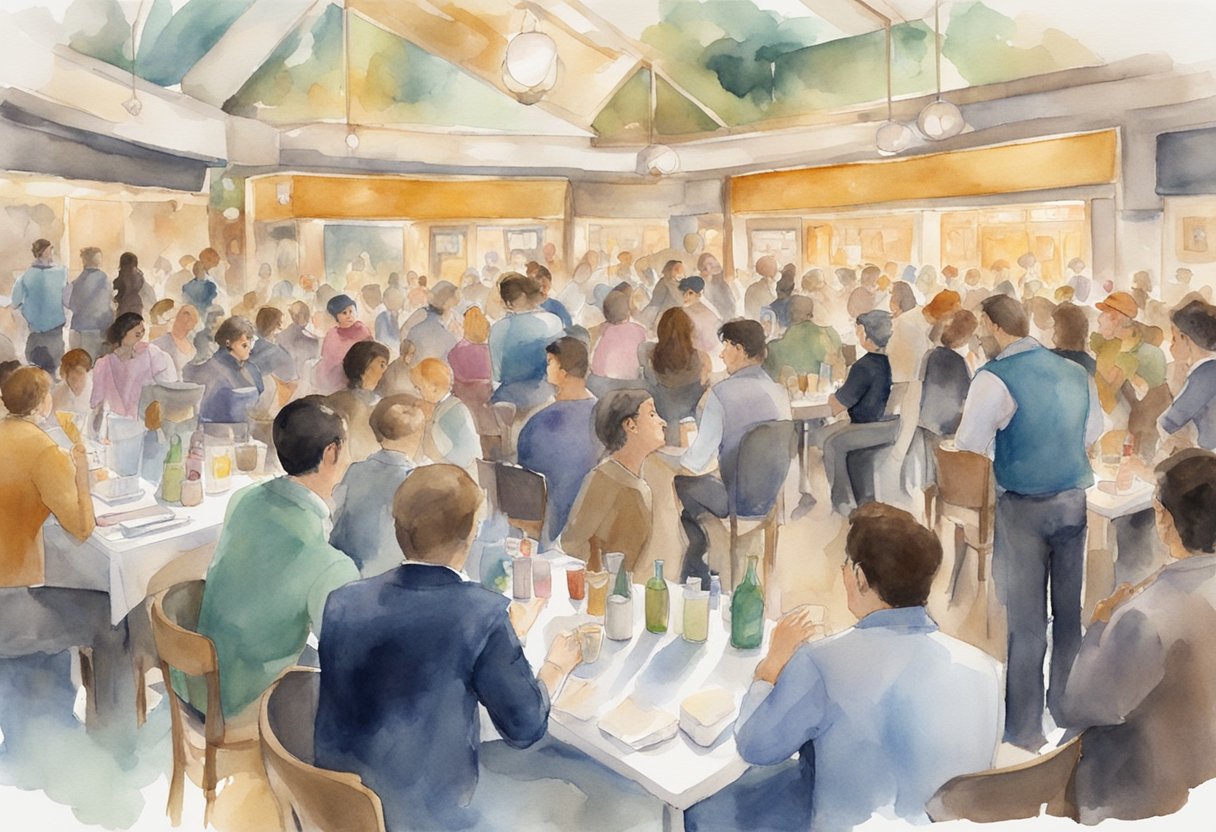
In this section, you’ll find answers to common questions that can help beginners navigate their first open mic experience, whether you’re there to perform or just to watch.
What should a beginner know before attending an open mic night?
As a beginner, it’s crucial to understand that open mic nights are casual events meant for sharing talents in a relaxed environment.
It’s best to arrive early to secure a spot, whether to perform or get a good seat as a spectator.
Some open mic events may have sign-up sheets to determine the order of performers.
It’s also important to be aware of the venue’s atmosphere, as this can influence the type of performances that are best received.
How many performances are typical for an individual during an open mic night?
Typically, you’ll have the chance to perform once during an open mic night.
The number of songs or the length of a performance set can vary, but most venues allot each performer a 10-15 minute slot, or about 2-3 songs.
It’s crucial to respect the time limit to ensure everyone has a fair opportunity to perform.
What are the unwritten rules of open mic nights that spectators and performers should be aware of?
Some unwritten rules include respecting the performers by listening quietly and clapping after each act, not going over your allotted time, and being supportive of other performers.
Remember that open mic nights are a platform for artists to try new material or gain experience, and a positive, encouraging atmosphere is beneficial to everyone.
What types of acts and performances can one expect at an open mic event?
Expect a diverse range of performances at an open mic night.
This can include singers, instrumentalists, poets, comedians, and even magicians.
The type of act largely depends on the venue’s focus—some may cater more to musicians, while others may be open to a broader variety of talents.
As a performer, how can you best prepare for an open mic night debut?
Prepare for your open mic debut by choosing material that showcases your strengths and is appropriate for the venue.
Rehearse thoroughly to feel confident on stage.
It’s also beneficial to practice at home to ensure your performance goes smoothly.
What are some effective tips for hosting a successful open mic night?
For a successful open mic night as a host, provide clear instructions on the sign-up process and time limits.
It’s also key to offer a supportive and welcoming environment for performers.
Offering simple food and beverage options can improve the overall experience for both audience and performers.
Having a proper sound system ensures performers are heard well.
For more detailed tips, you might find it useful to learn about hosting.

